Highlights Day 1
Welcome & Opening
Opening Statement
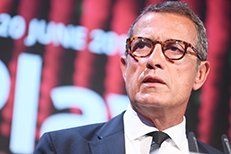
Opening EURELECTRIC’s 2017 Annual Convention and Conference, outgoing EURELECTRIC President Antonio MEXIA, CEO of EDP, recalled the priorities of his Presidency, stressing the important role of electricity for a decarbonised and competitive Europe. “The revolution in our sector is led by technology, and the EU needs to able to keep up with this speedy process”, he stated. The take-up of electrification, empowered customers through innovative solutions and smart market designs are all necessary elements for a sustainable transformation. Mr Mexia stressed that further work is needed to better recognise the value of energy, flexibility and availability of capacity, adding that “long term contracts in this sector are key”. “Our future business is not about competition between centralised versus decentralised, or DSOs versus retailers. In the end we must focus on developing solutions and services for our customers which are things that matter most,” he concluded.
Session I: The Value of Electrification
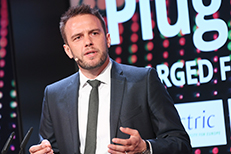
Session Chair Kristian RUBY, Secretary General of EURELECTRIC, introduced Session 1 on the Value of Electrification by debunking several commonly held views concerning the power sector. He stated that utilities can cope with the future, that there is no way that storage will kill the industry, and renewables will not destroy the old power system. “It is nonsense to say that electricity is a dirty energy carrier; Society wants clean energy and it is evident that power companies can lead the energy transition,” he said. “It is simply not true that utilities belong to the past. The future is electric and utilities belong to the future.” Mr Ruby further explained that if we want to own the future we must not fear it. The electricity sector must therefore seize this opportunity and prepare for the future. He concluded by calling on participants to engage actively over the next 2 days. He hoped that these discussions will inform a new vision for the sector, help sharpen the industry’s view of the future, and clarify the role that utilities should play in creating win-win solutions for the energy system, the sector, citizens as well as society as a whole.
Kristian Ruby - Reverse speech: view & listen
Keynote Speech
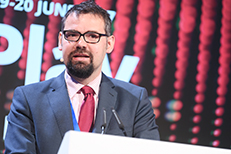
Laszlo VARRO, Chief Economist at the IEA, provided participants with an insight into the energy system that will be needed following the Paris Agreement. He warned stakeholders not to mistake the stabilisation of carbon emissions with the stabilisation of the global climate. “If the 2oC goal is our mountain to climb, we may have made it to base camp, but the really steep climb is still ahead”, he said. As global energy demand continues to grow, the two key pillars to reach the climate goals are wide scale energy efficiency deployment and renewable capacity. With the buildings and transport sectors lagging behind in decarbonisation, their electrification becomes essential. Mr Varro said that decarbonising the power system without a proper role for nuclear power and CCS will imply that wind and solar power capacity needs would be extreme, adding that energy storage, as a critical asset, will have to be properly managed. He concluded by calling on utilities to lead the change: “The system will require those who engage in linking demand, supply and flexibility. Business models and IT technology will be different, but we will continue to need utilities”.
Application and Demonstration
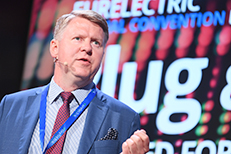
Elias PÖYRY, CBO of Virta Ltd. (Liikennevirta Oy), presented his company’s experience in the integration of electric vehicles (EVs) into the grid (“Vehicle-to-grid hub (V2G)”), explaining that EVs are playing a significant role in the energy system, effectively becoming “batteries on wheels”. Although there are still too few EVs on the road, their number is steadily increasing and he expects price parity with conventional cars by around 2022-2025, as well as adoption of standards for bi-directional EV-charging in a few years. “We need smart charging in order to make electric vehicles a solution rather than a problem for the energy system,” Mr Pöyry said. He emphasised that consumer engagement is key to integrating EVs into the grid, and customers want to benefit if their electric car’s battery is used to balance the power system, possibly by getting free electricity in the process. “We need to connect all electric vehicles through a platform to get benefits for the system and for customers.” Mr Pöyry said that “Electricity production should be CO2 neutral by 2050 and personal transportation should be too,” and concluded by stating that “the future is electric and the future of transportation is electric”.
Watch video: Protect your Grid and Support Renewables with Electric Vehicles
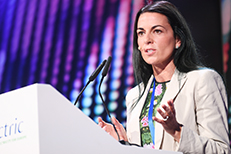
Rowena McCAPPIN, Project Director at Glen Dimplex, presented “RealValue Small-Scale Energy Storage”, a Horizon 2020 project which focuses on providing flexibility through Demand-Side Response. The small-scale energy storage project reveals the value that electrification of heat can bring to the electricity grid and consumers by providing space and water heating, which has already had physical trials in over one thousand households in Germany, Ireland and Latvia. She explained that heating equipment data can be extracted from installations through the use of smart plugs, sensors and digital solutions. At the same time the user-friendly app allows customers to monitor, schedule and control their heating consumption remotely. Ms McCappin said that the system can be used to provide flexibility by reducing peaks, balancing the grid and enabling larger integration of renewables. Once connected to the grid the quantum system developed during the project can provide demand-side response flexibility allowing for arbitrage or fast frequency response without compromising customer’s comfort.
Watch video: the RealValue System
Session I: Panel Debate
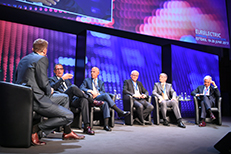
Session Chair Kristian RUBY, Secretary General of EURELECTRIC, moderated the panel discussions and focused on the challenges to be overcome in order for electrification to realise its potential in achieving the energy transition.
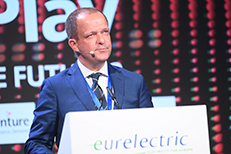
The debate was preceded by an e-voting session presented by Gregorio OGLIARO, Utilities Managing Director (Digital Grid in EALA) at Accenture, which also touched upon electrification and decarbonisation in general. 39% of the audience believe that low-carbon electricity can become the dominant energy carrier in Europe by 2040, while 28% believe it will happen by 2030. An impressive 81% of the audience consider decarbonisation as an asset (business opportunity) with only 19% seeing it as a liability (cost to become compliant). According to 43% of the audience, storage technologies will be the most important technology for the decarbonisation of the electricity sector, while 30% chose renewables, 19% smart grids, 5% CCS, and 3% nuclear.
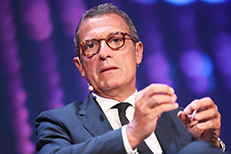
During the panel debate, Antonio MEXIA, CEO of EDP and outgoing President of EURELECTRIC, further elaborated his views on the importance of electrification. He was comforted by the clear choice expressed by 81% of the audience during the e-voting session who believe that decarbonisation is an asset and not a liability. Mr Mexia said that “we cannot be sceptical about this change”. He explained that EDP decided to invest in renewables over ten years ago and that “Europe and European industry need to be clear about this [decarbonisation] vision”. He added that investment patterns are evident in both the power sector and the automotive industry and that “people believe in this change in terms of electrification”, mentioning the €2 trillion in investment needed in the electricity sector between now and 2040. He is however convinced that “technology is creating a much quicker electrification world than expected”.
Reflecting on his two-year Presidency of EURELECTRIC, Mr Mexia stated that economics and business models have changed. He said that, for example, the deployment of rooftop PV in recent years has seen an unfair increase in fixed costs for poorer customers, and concluded by stating that the European regulatory framework should reflect such evolution in business models.
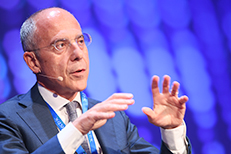
Francesco STRARACE, CEO of Enel and newly appointed President of EURELECTRIC, explained that the shift towards electricity becoming the dominant carrier in Europe could even happen sooner than 2040 if our asset legacy is managed properly. He stated that the transition to electrification can be a significant opportunity, provided that we do not adopt a wasteful approach where old assets are simply “thrown away”. Speaking about such assets, President Starace said, “We should consider that these assets can participate in the energy transition and create value for the industry.” In conclusion he highlighted that power generation and connecting infrastructures are the two areas where significant investments are needed, and that DSOs have the chance to enhance value for the future array of investments.
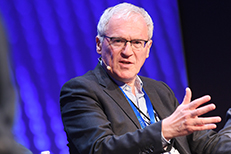
Jean-Bernard LÉVY, outgoing Vice-President of EURELECTRIC and CEO of EDF, explained that in order to take decarbonisation forward the company is working on developing decarbonised solutions for transportation and buildings. Mr Lévy expressed concerns with the infrastructure problem that he said is a result of the current regulations having been set at a time where the focus was solely on consumers, whereas today there is also a great focus on decarbonisation. According to Mr Lévy, balance is needed between consumer-driven and climate-driven regulations. To the question regarding whether France would be able to handle a rapid growth in electro-mobility, the EDF CEO responded by stating that: “When we look at the export balance, there is no doubt that millions of electric vehicles can be accommodated in the French electricity system”. He continued by stating that he believes a drastic increase in sales of electric vehicles will happen in the future, but that this will require an adequate regulatory framework.
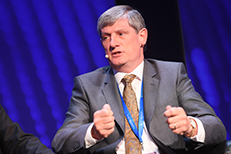
Pat O’DOHERTY, CEO of ESB, warned that while electrification of transport is set take off, the real prize will be to electrify heating. “There is currently no vision for this in the EU. Instead, we have a tendency to wait until power is decarbonised and then move to heating. But electric heating technologies are already 3 to 4 times more efficient than fossil alternatives”, he explained. Heat pumps, when used in combination with smart grid technology, will be needed to address the high peak loads for heat, he said, calling for full utilisation of grid investments which have already taken place. Further ambition is therefore needed for electrification of heat, he added: “By 2050, 50% of end use energy should be electricity, and heat will definitely play a key role”.
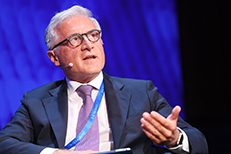
Guido BORTONI, President of the Italian Regulatory Authority for Electricity, Gas & Water, highlighted that the modern regulator regulates the energy system by protecting customers and by building tools to promote the operation of market players to achieve policy goals. Giving recent examples from Italy, Mr Bortoni pointed to the reform of domestic tariffs carried out in order to promote the penetration of electrification. He explained that since the 1970s Italy had a tariff aimed at discouraging the use of electricity since at the time it was generated from oil, which required large imports. “Now that electricity is reliable, sustainable and supplied in a predictable manner it is possible to promote further electrification,” he said. This is also why Italy has introduced second-generation smart meters, as these will enable introduction of the prepaid contracts, which are important to the overall system. Mr Bortoni explained that Italy is also considering introducing a new type of regulation for the grid, providing for a more flexible model, which allows one to determine the percentage of CAPEX/OPEX chosen for the project in a more flexible manner. “The new world is the capacity world - as the energy world suffers from revealing the right energy signals, the capacity mechanism is the new important component to enable the future,” he concluded.
Session II: Customers in a Digital and Electrified Society
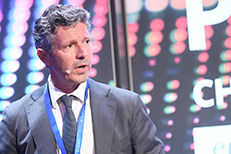
Wytse KAASTRA, Accenture Utilities Managing Director responsible for Energy Consumer Services, remarked that “our Industry is in a perfect storm. We are in the middle of the energy transition with huge technology developments which all come with challenges and opportunities”. Introducing Session II, he raised a number of questions which he judged central to the debate: What is in it for new energy consumers? How do you create the right incentives for the right behaviours? What regulatory framework do we need?
Keynote Speeches
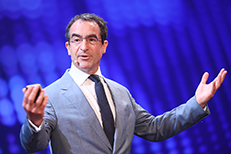
Michael LIEBREICH, Chairman of the Advisory Board of Bloomberg New Energy Finance, noted that we are currently seeing unprecedented developments in the electricity sector. Bloomberg’s 2017 New Energy Outlook predicts an increase of over 400% for wind power and more than 1700% for solar over 2015. Mr. Liebreich also spoke about electric vehicles which are becoming more attractive to customers and could become even more so when they reach a price that is equivalent to fuel-powered cars, something which will likely not happen before 2025 despite a continually increasing range of vehicles, expected to reach 180 commercially available vehicles by 2020. As a final word of warning, Mr. Liebreich called on the audience to ‘redouble their thinking’ on resilience. An increasingly connected world will also be vulnerable on an unprecedented scale. “Today’s society is entering into an era of profound risk – and it is time to wake up and realise the potential consequences and vulnerabilities of integrated networks”, he emphasised.
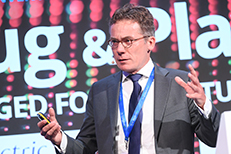
Sander VAN GINKEL, Managing Director of Strategy Utilities at Accenture, saw a need to rethink the roles and responsibilities of DSOs in the more hybrid energy system. As the energy system changes towards more decentralisation with more distributed energy sources, new opportunities but also new risks emerge. “A new optimisation mechanism is needed to manage distribution networks in a way that maintains the historically high performance of European DSOs”, he stated. When the market welcomes new players and service providers, DSOs need to adapt and facilitate market operations, ensuring high quality of grid operation. Mr Van Ginkel identified three key roles for DSOs as distribution platform optimisers: bottom-up asset planning, active system management and neutral market facilitation. On top of the redefinition of roles and responsibilities, he also asked for more cost-reflective grid tariffs, room for DSOs to innovate and for a continuous dialogue between stakeholders.
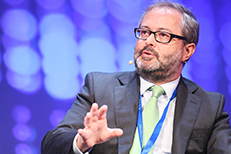
Julio CASTRO, Executive Vice-President Regulation of Iberdrola and new co-chair of the EURELECTRIC DSO Committee, stressed the important role of DSOs in the energy transition. “DSOs are no longer the walking dead of the energy system” he said, pointing to the value of the grid and to the benefits of being connected to it. “DSOs are committed to transform their business and become a platform that meets customers’ expectations and brings market parties efficiently together”, he continued. Regarding the new DSO entity put forward by the European Commission, Mr. Castro took a positive view, considering that it entails the promise of delivering value to customers and society. Closing his speech, Mr. Castro presented the three focus areas of the EURELECTRIC DSO Committee for the coming years: enhancing the value of the grids, supporting a more active consumer and supporting the climate action. “DSOs are facing a huge opportunity”, he finished.
Slide 3 embedded video
Application and Demonstration
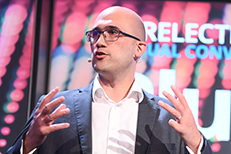
Encouraged by over 56 million views on YouTube of their collaboration with Gorillaz, E.ON’s Gavin ROBERTS showcased the E.ON Solarcloud app. According to him, E.ON received strong feedback from consumers that they would like to have a solution that allows them to get involved and manage their energy generation. Mr. Roberts noted that with their solution, E.ON customers now have a tool at their disposal to determine how their power would be used and by whom. “This facilitates consumer engagement and supports the democratisation of energy in a sector where there is a huge demand for fair-priced local energy”, he stressed.
Watch Gorillaz-E.ON video: solar storage is here
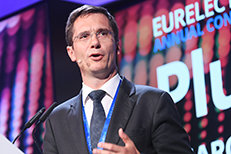
Antonio COUTINHO, Chair of EURELECTRIC’s Retail Customers Committee and Member of the Executive Board of EDP Commercial, gave an insight into the energy future as envisaged by EDP, with innovation at the core of the system, abundant generation and storage, smart homes and e-mobility becoming standard and new market players emerging that bring about new market dynamics. “At EDP, we believe that this will be the future and we want to be part of it. That is why we developed the concept of the EDP smart home”, he stressed. Giving a demonstration of the model, he stressed that “with those devices we are putting more intelligence into the system to enhance consumer trust and support them as much as we can”. When asked about prices, he said that the tariff structure should be changed so that policy costs related to decarbonisation are taken out of the electricity bill and he concluded by saying that electricity should be placed on a level playing field with other energy carriers.
Watch video: EDP Smart Home solutions
Session II: Panel Debate
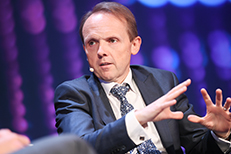
When asked about where the lines between retailer and DSO activities should be drawn in the future, Alistair PHILLIPS-DAVIES pointed to the regulator who, at least in the UK, would need to “redefine the dividing lines between the two areas as part of the next regulatory price control period”, he considered. Interestingly, he also noted that companies such as Google will have significant reach in the digital space and he stressed that their appetite to partake in large scale infrastructure investment was likely to be very limited. The challenge for classic retailers will therefore be to defend their ground, through innovative approaches, and to offer ‘easy life’ solutions. Access to data supplied by smart meters, especially hourly or even half-hourly consumption data will be very attractive to the new comers and Mr. Phillips-Davies expected that “they will leverage profits in this space in the future”.

Hando SUTTER, Chairman of the Management Board of Eesti Energia AS, stated that in Estonia smart meters are now fully rolled out. He took the view that the investment to roll out these smart meters was worth it: in Estonia, since the roll out, customer satisfaction doubled in only 2 years, grid losses went down, investment planning improved, customers’ complaints diminished and there has been a clear improvement on the detection of network issues. Also, with the advent of smart meters, the restoration time after an incident on the grid was reduced and the prevention of defected parts improved. He however expressed concerns on the integration of renewables: “the integration of more renewables will create more vulnerability on the markets, hence there will be a need for market incentives to ensure a level playing field”, he stressed.
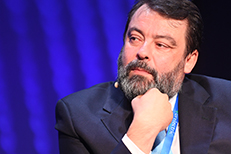
Javier ORMAZABAL, President and CEO of Ormazabal, acknowledged the current challenges of the DSO business but he seemed mostly concerned about situations where the grid may unexpectedly fail to work due to an insufficient analysis of risks. “The network is an asset and we have to improve the value of assets through digitalisation”, he continued. In his view, grids’ digitalisation will allow DSOs to accompany the decarbonisation agenda and increase the value of grids well beyond what is currently estimated. In conclusion, he took the view that electricity companies must develop and provide real services to customers, or other companies will enter into their business.
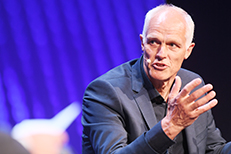
Knud PEDERSEN, Vice-President of DONG Energy and Chairman of the Board of Radius Elnet, and co-Chair of EURELECTIC’s DSO Committee highlighted the role of DSOs as neutral market facilitators. “We should try and make our infrastructure available to all commercial players and of course to customers”, he said. He considered the interaction between parties to be a challenge, with customers being more and more active and with DSOs as facilitators. He also emphasised the importance of price transparency and of moving the price structure closer to the physical nature of distribution networks, underlined the importance of price signals and called for the modernisation of the energy regulation related to network flexibility.